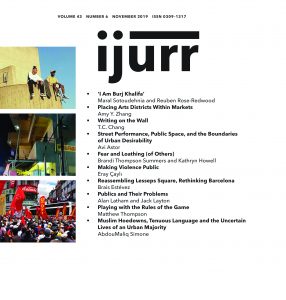This article discusses the relationship between violence and public space in light of a collectively perpetrated and widely televised arson attack that took place in 1993 in Sivas, Turkey, and its recent on‐site commemorations. It draws on critical theoretical perspectives developed since the 1990s to consider conventional models of public space as entangled in violence, while also aiming to contribute to contemporary scholarship on contrarian responses to this entanglement. The tendency in this scholarship is to identify these responses as bottom‐up, unscripted, performative and direct and, therefore, as diametrically opposed to those identified as top‐down, scripted, rational and legislation‐facing. The multifarious initiatives and interventions involving contextually shifting priorities, positions and strategies that mark the case discussed in this article call this tendency into question. Unassimilable under such binary oppositions, these initiatives and interventions have not refrained from engaging conventional models of public space while also developing and mobilizing contrarian ones. This article ultimately argues that public space is not just where violence occurs but also where its semantic disambiguation is pursued; this pursuit, which involves various forms of socio‐political work, in turn defines and continually redefines the very distinction between conventional and contrarian imaginaries of public space.

